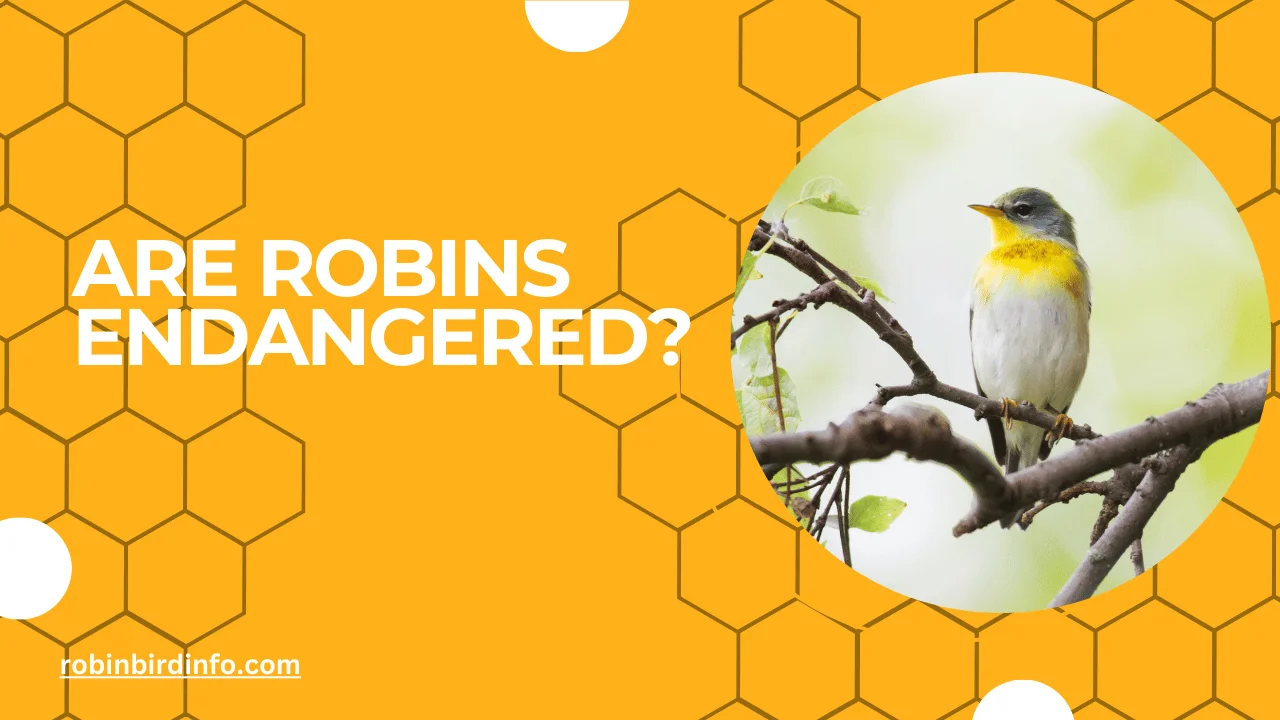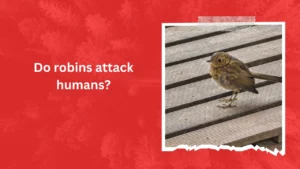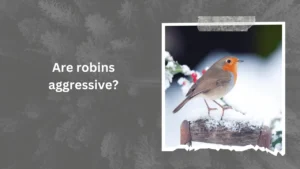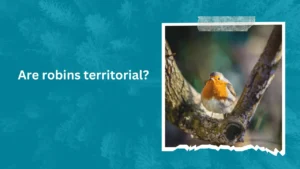Have you ever been enjoying a peaceful morning on your patio, only to be dive-bombed by a seemingly harmless robin? You’re not alone!
These cheerful red-breasted birds, a familiar sight in backyards across North America, can transform into surprisingly aggressive creatures during certain times of the year. Their territorial instincts and fierce protectiveness can lead to dive-bombing attacks, loud scolding calls, and even the occasional brush with a talon.
This aggressive behavior might come as a shock, considering the robin’s reputation as a friendly songbird. But understanding their territoriality and the reasons behind it is key to appreciating these feathered neighbors.
Are Robins truly endangered? Not in the traditional sense. However, their well-being, and your own backyard harmony, might depend on recognizing the triggers for their territorial displays. This article delves into the fascinating world of robin behavior, exploring what makes these seemingly mild-mannered birds turn into temporary backyard brawlers.
So, grab a cup of coffee, settle in, and prepare to be surprised by the hidden depths of robin aggression!
Contents
Section 1: Conservation Status of American Robins
IUCN Red List: As of now, the American Robin is not listed as a species of concern on the IUCN Red List. This means that they are not currently considered threatened or endangered.
Population Trends: While American Robins have experienced fluctuations in population numbers over the years, they are generally considered to be stable. However, local populations can be impacted by various factors, including habitat loss and disease.
Threats to Populations: Despite their relatively stable status, American Robins face several threats:
- Habitat Loss and Fragmentation: The loss of natural habitats, such as forests and woodlands, due to urbanization and agriculture can negatively impact Robin populations.
- Predation: Predators like cats, hawks, and snakes can prey on Robin eggs, nestlings, and adult birds.
- Disease: Diseases such as avian malaria can affect Robin health and survival.
Section 2: Habitat Loss and Fragmentation
Urbanization and Development: Urbanization and development can lead to the loss of natural habitats, reducing the availability of nesting and foraging sites for Robins.
Deforestation and Agriculture: Deforestation and intensive agriculture practices can fragment habitats and reduce the diversity of insect populations, which are a crucial food source for Robins.
Climate Change: Climate change can impact Robin migration patterns, breeding success, and food availability. Changes in temperature and precipitation patterns can disrupt their natural rhythms and lead to population declines.
Section 3: Predation and Disease
Natural Predators: Natural predators, such as cats, hawks, and snakes, pose a significant threat to Robin populations. Cats, in particular, can have a devastating impact on bird populations.
Disease and Parasites: Diseases like avian malaria can weaken Robins and make them more susceptible to other threats. Parasites, such as mites and lice, can also negatively impact Robin health.
Section 4: Human Impact
Pesticide Use: The widespread use of pesticides can harm Robin populations by reducing the availability of insect prey. Pesticides can also directly poison birds.
Window Strikes: Window strikes are a significant cause of bird mortality, including Robins. Birds may mistake reflections in windows for open sky and collide with the glass.
Climate Change: As mentioned earlier, climate change can have a profound impact on Robin populations. Changes in temperature and precipitation patterns can disrupt their migration patterns and breeding cycles.
Section 5: Conservation Efforts
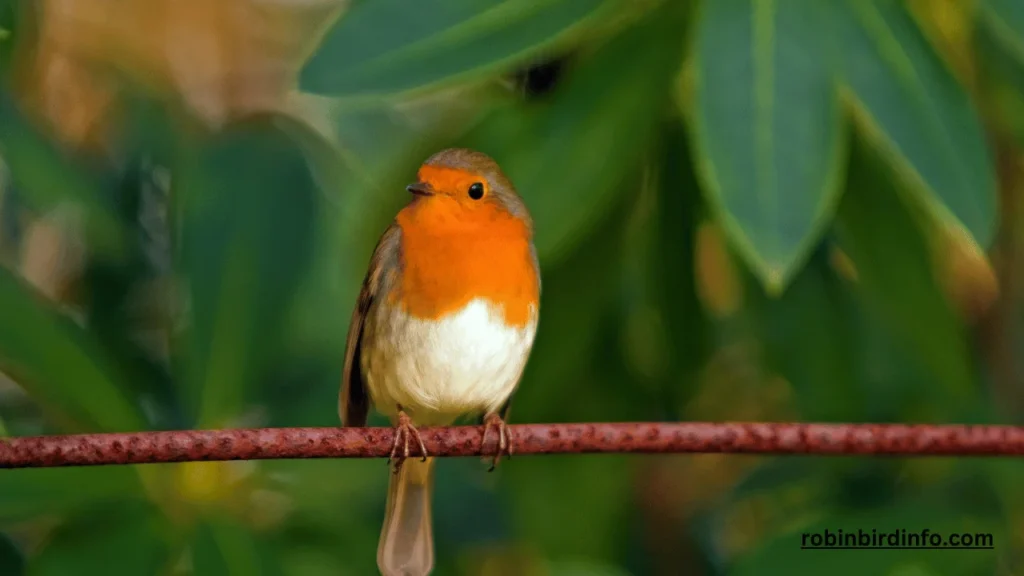
Habitat Conservation and Restoration: Protecting and restoring natural habitats is crucial for Robin conservation. This includes preserving forests, woodlands, and urban green spaces.
Citizen Science: Citizen science initiatives, such as birdwatching and nest monitoring, can help researchers gather valuable data on Robin populations and their behavior.
Reducing Window Strikes: Simple measures, such as using bird-friendly window treatments or decals, can help prevent window strikes.
Supporting Conservation Organizations: Supporting conservation organizations dedicated to bird conservation can contribute to efforts to protect Robin populations.
Conclusion
While American Robins are not currently considered endangered, they face a variety of threats that could impact their populations in the future.
By understanding these threats and taking steps to protect their habitats, we can help ensure the survival of these beloved birds for generations to come.
FAQ’s
Are Robins endangered?
While American Robins are not currently listed as endangered, they face various threats that could impact their populations in the future.
How can I help protect Robins?
You can help protect Robins by creating a bird-friendly environment in your yard, reducing the use of pesticides, and supporting conservation organizations.
What is the biggest threat to Robin populations?
One of the biggest threats to Robin populations is habitat loss and fragmentation due to urbanization and agriculture.
How can I prevent window strikes?
To prevent window strikes, you can use bird-friendly window treatments, such as window decals or curtains. You can also avoid placing bird feeders near windows.
What is the role of citizen science in Robin conservation?
Citizen science projects allow individuals to contribute to scientific research by monitoring bird populations and collecting data on their behavior and habitat use. This information can help inform conservation efforts.
How can I attract more Robins to my backyard?
You can attract more Robins to your backyard by planting native plants, providing fresh water, and avoiding the use of pesticides. You can also provide nesting sites and bird feeders.

